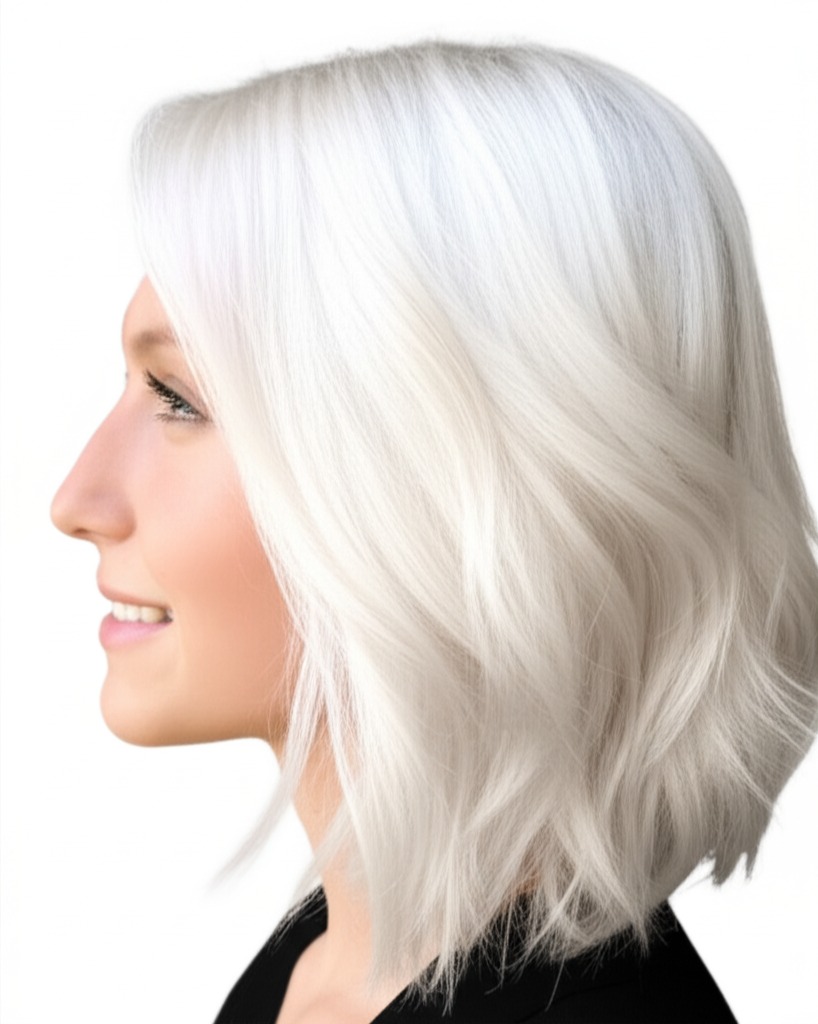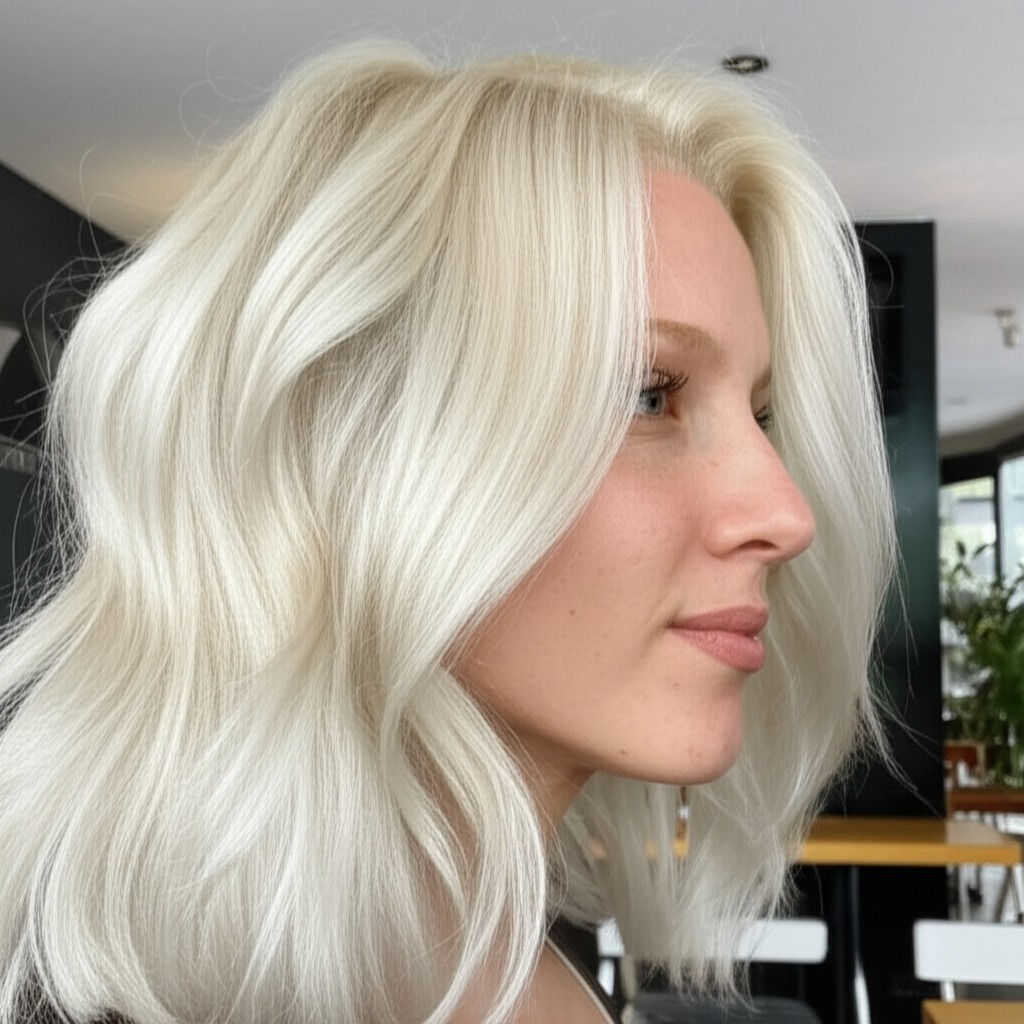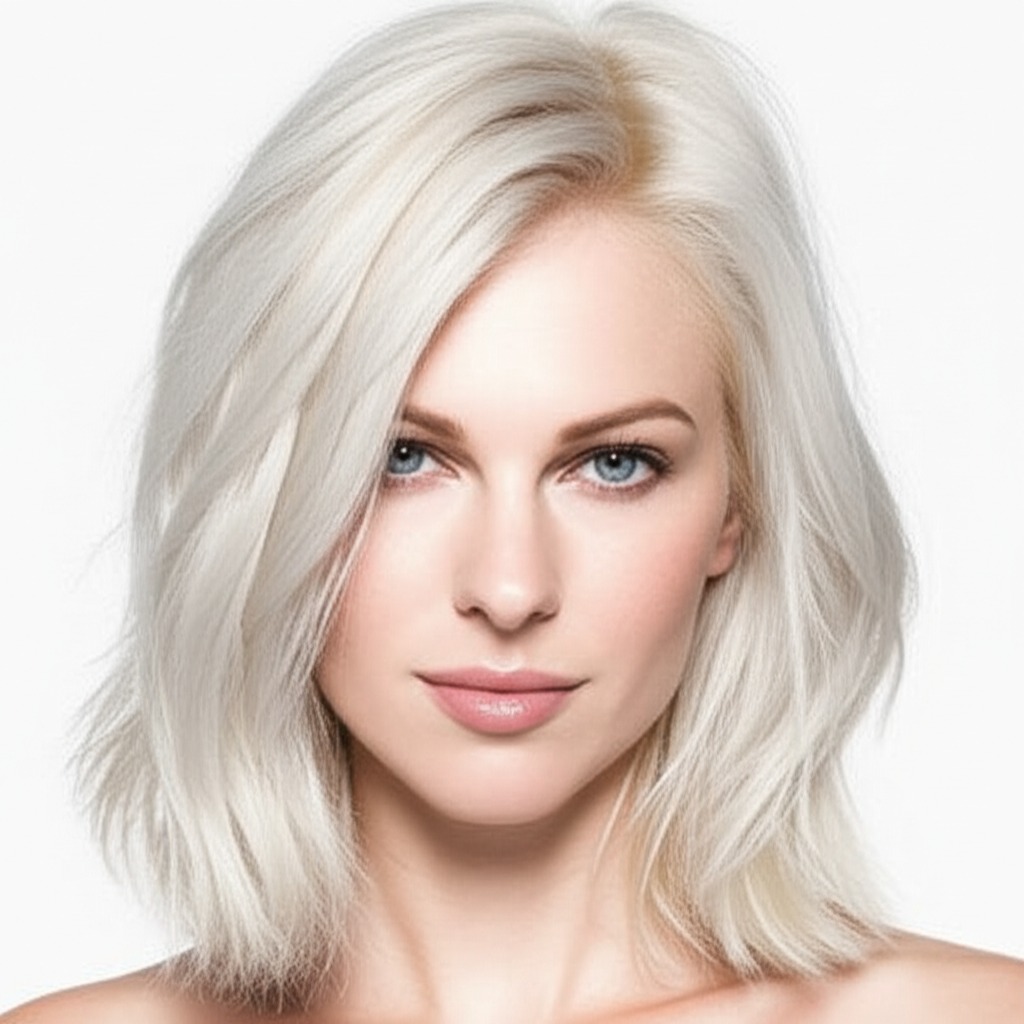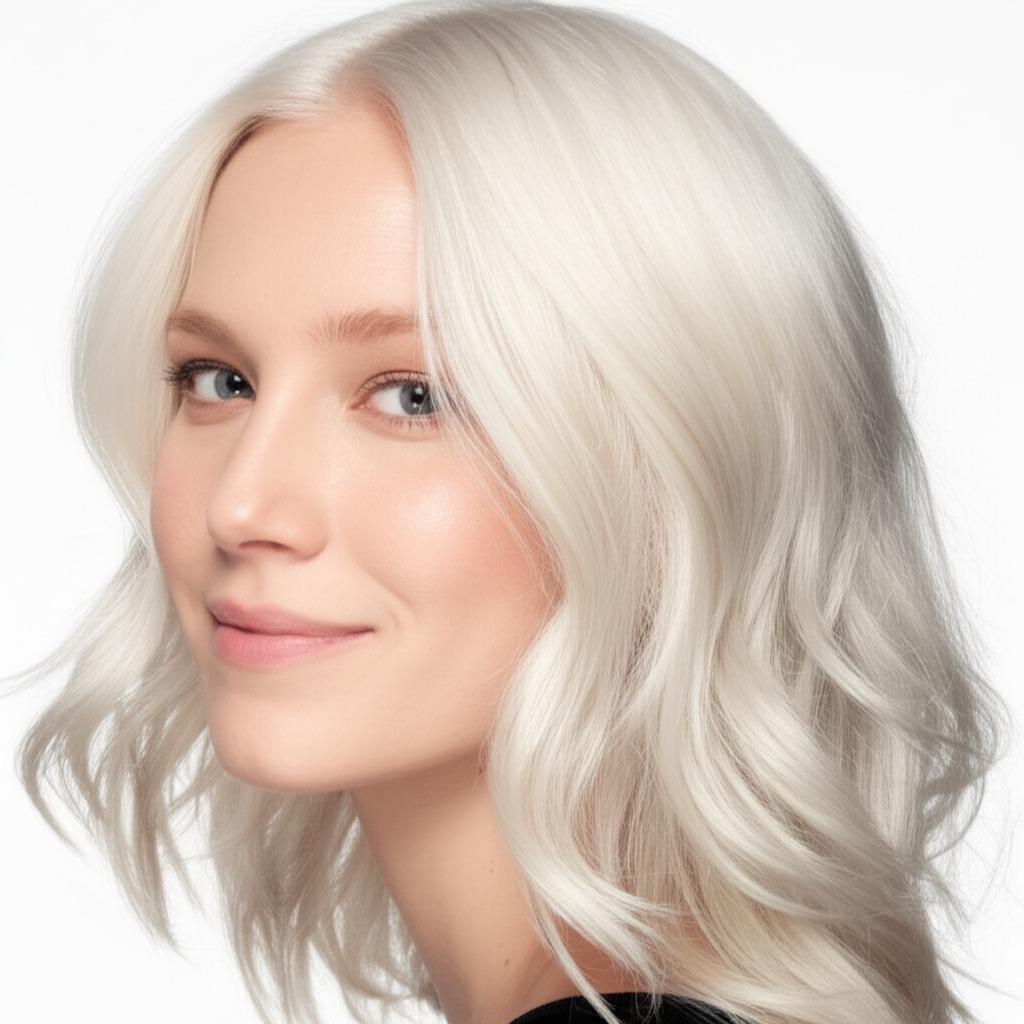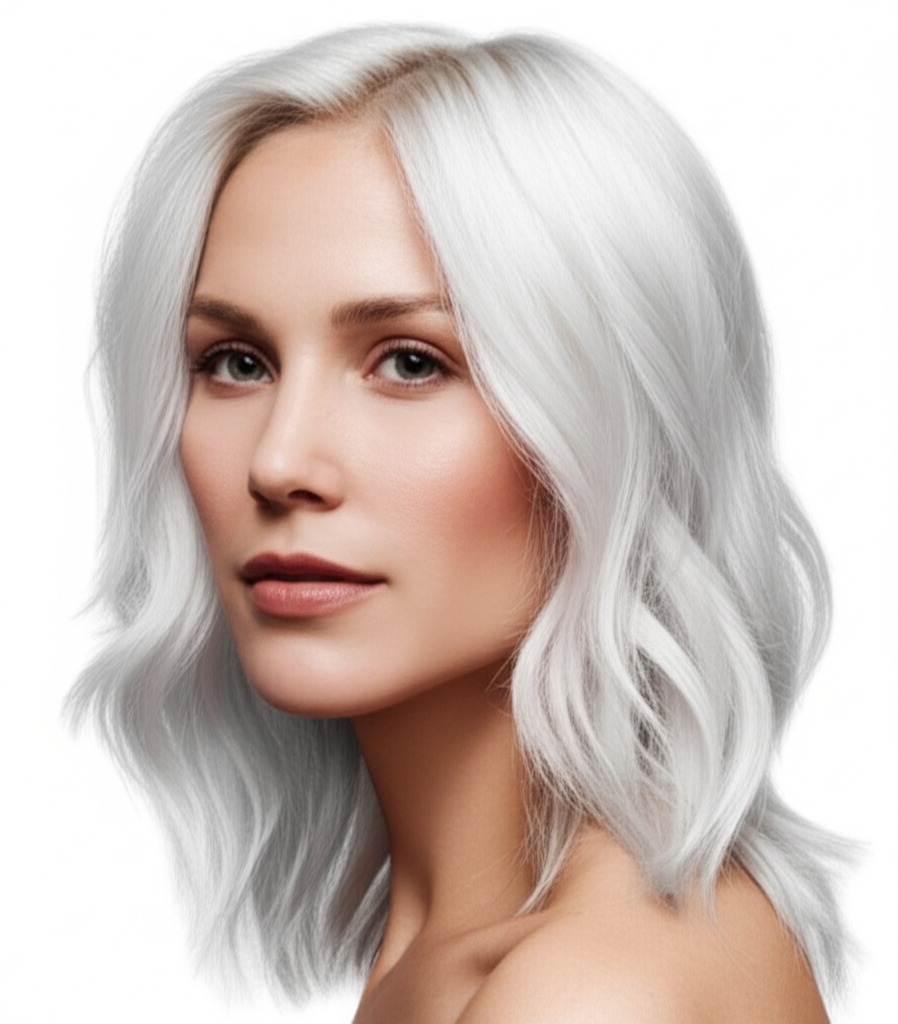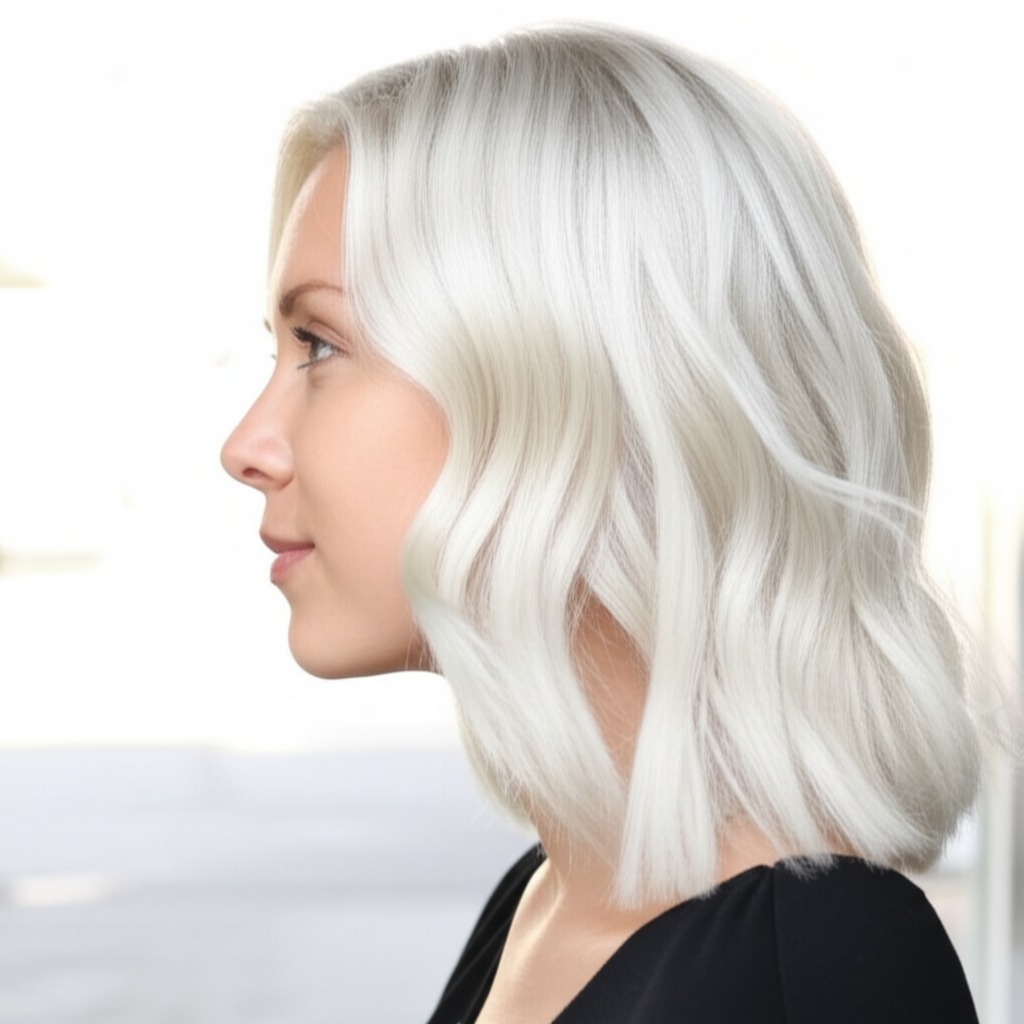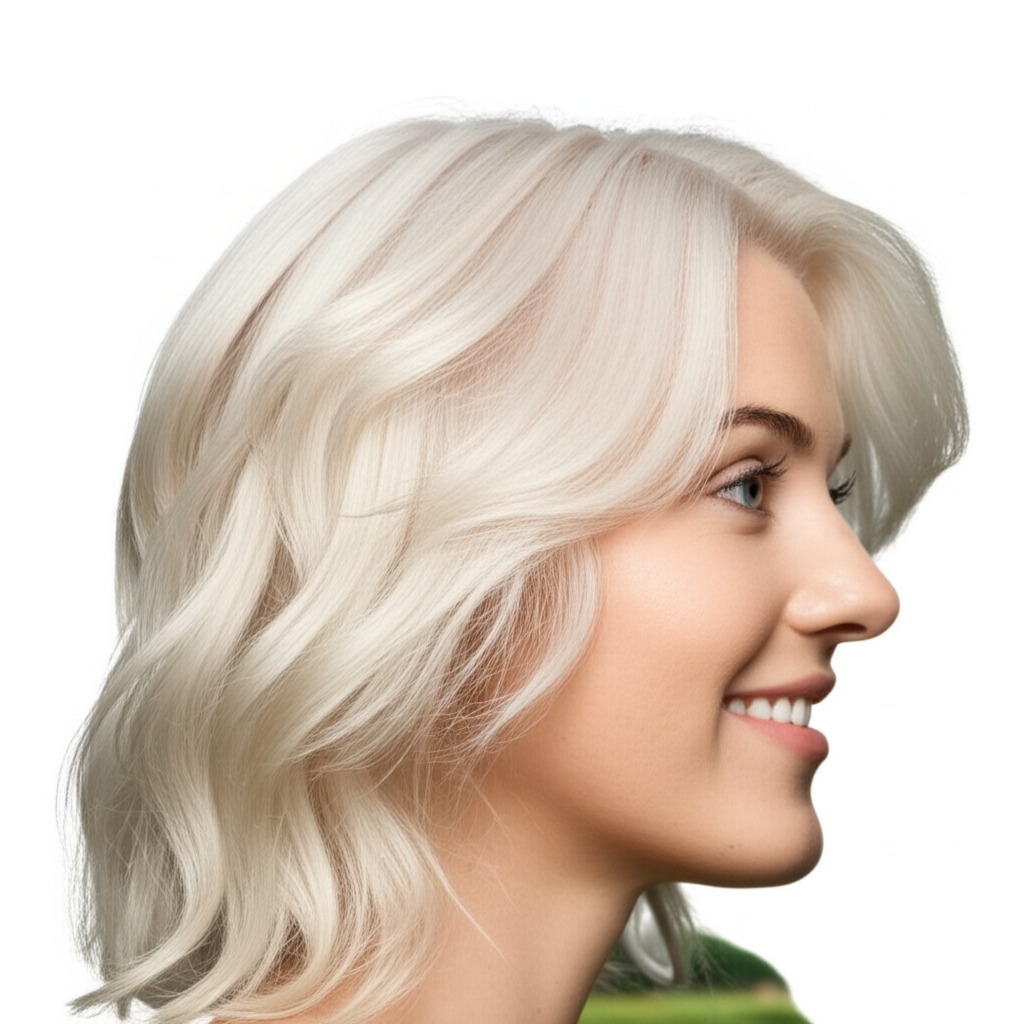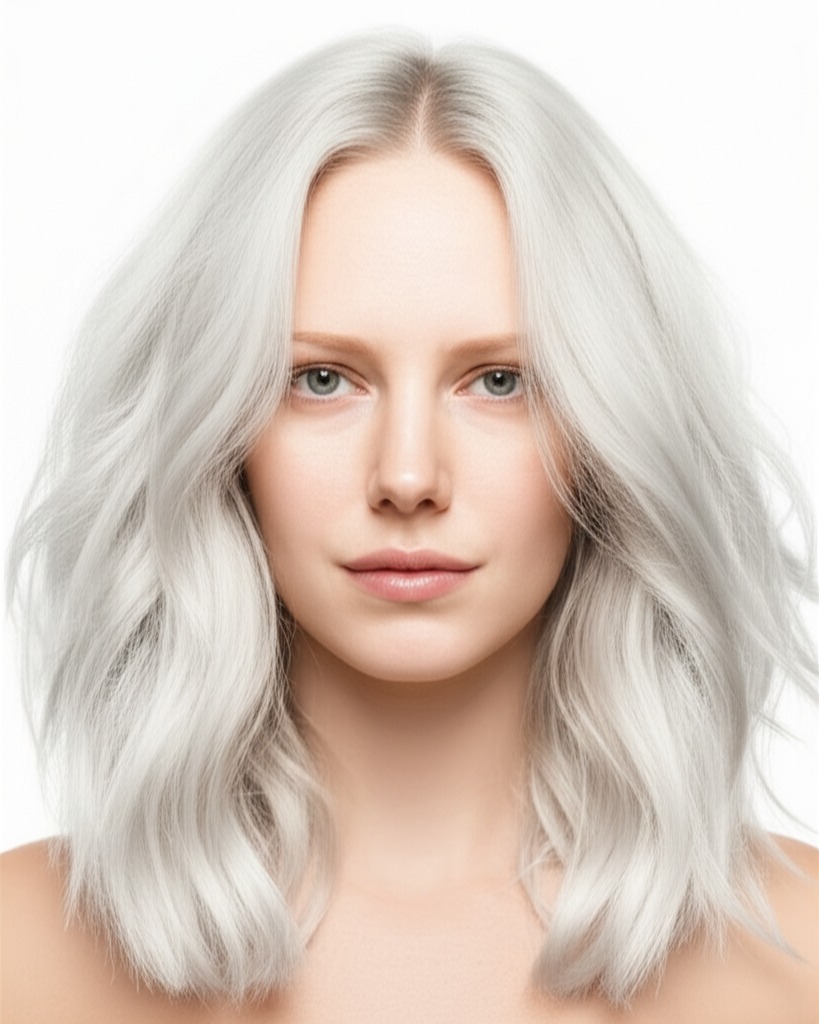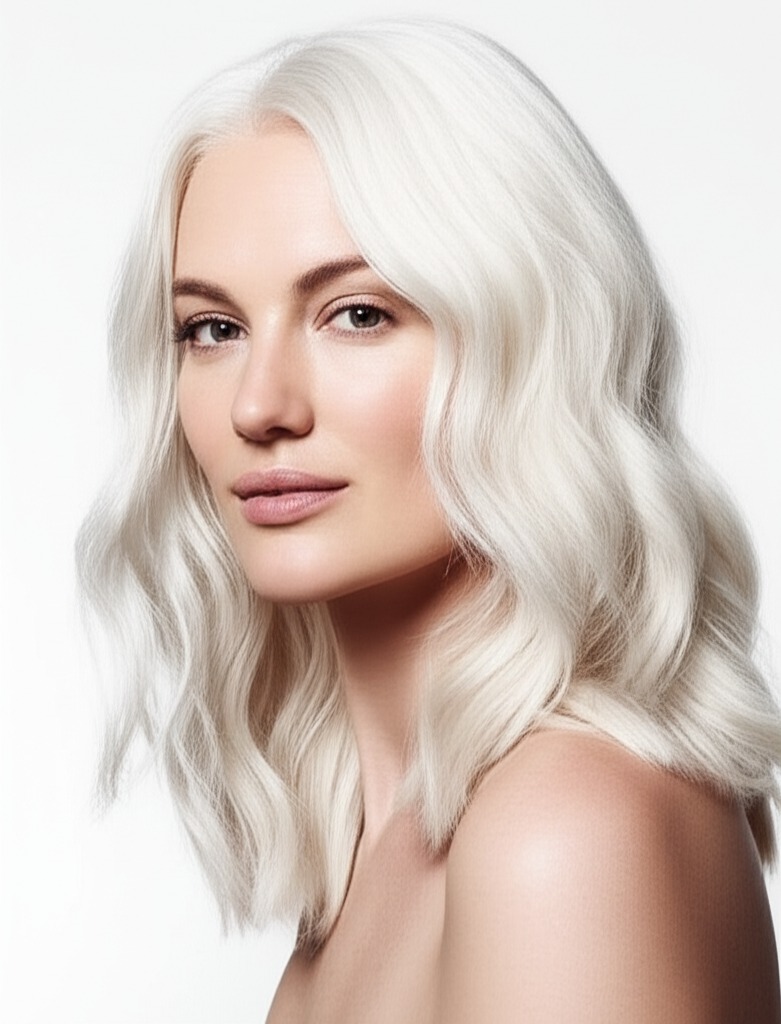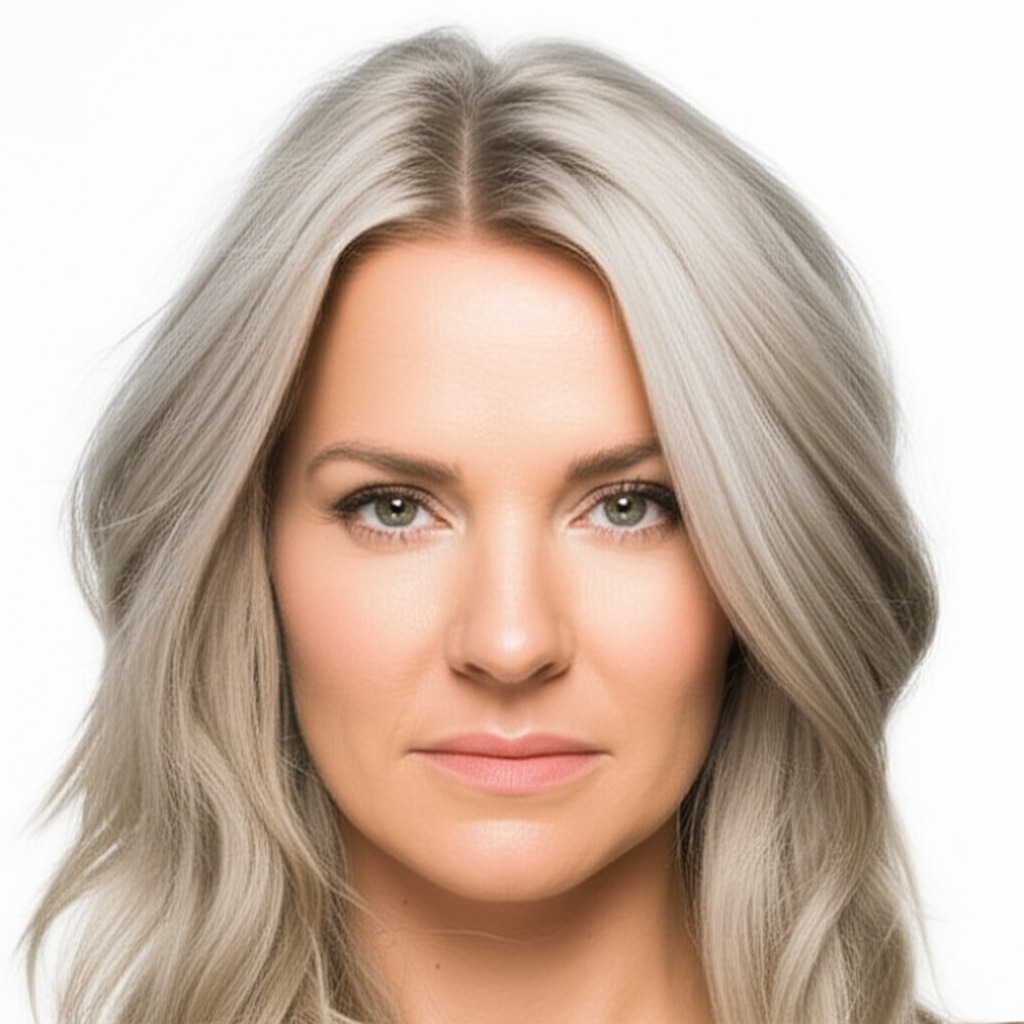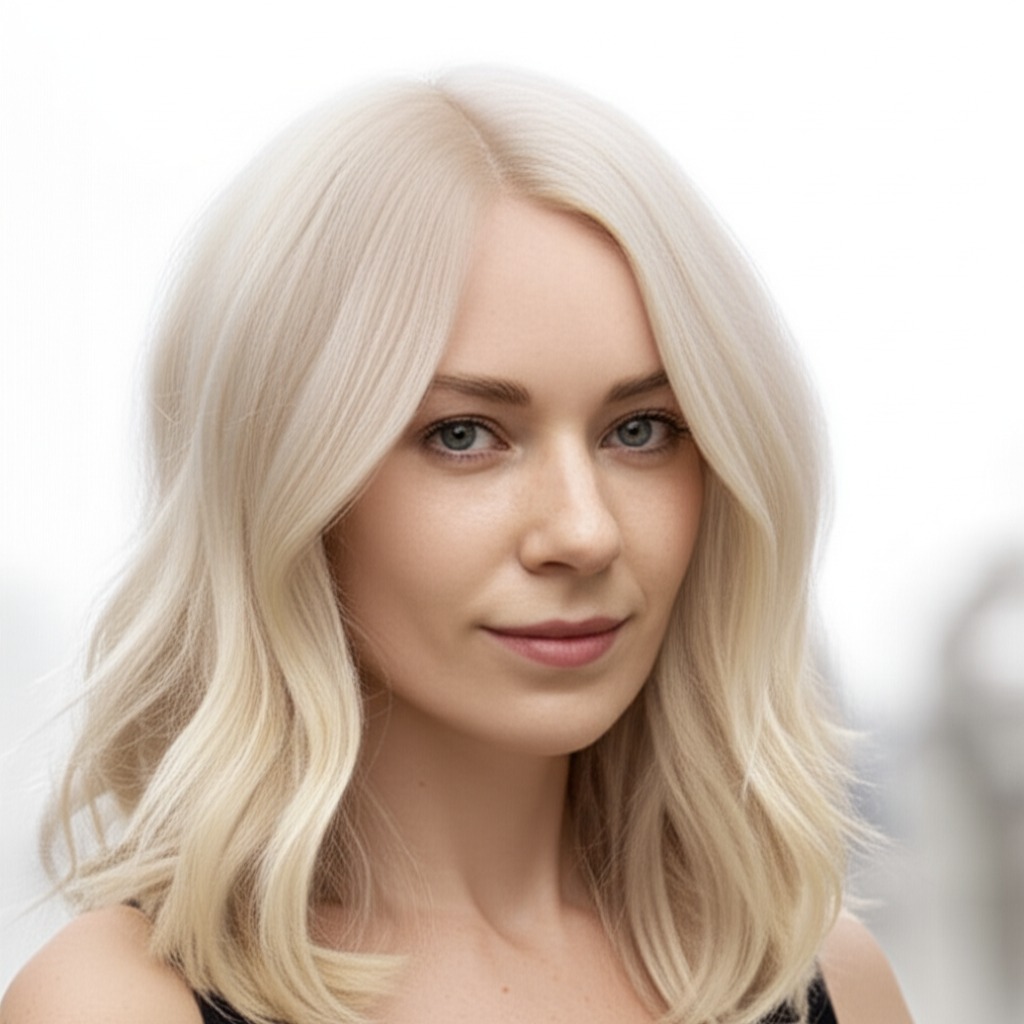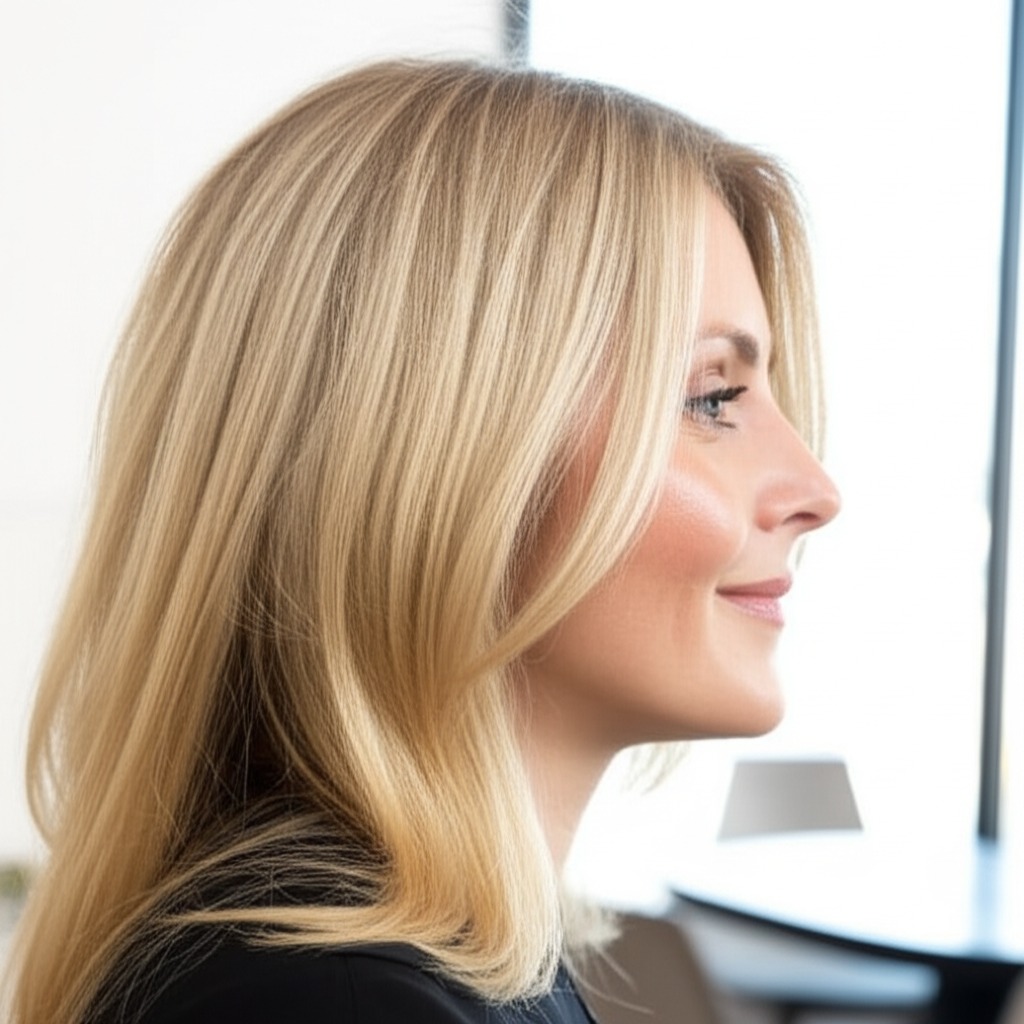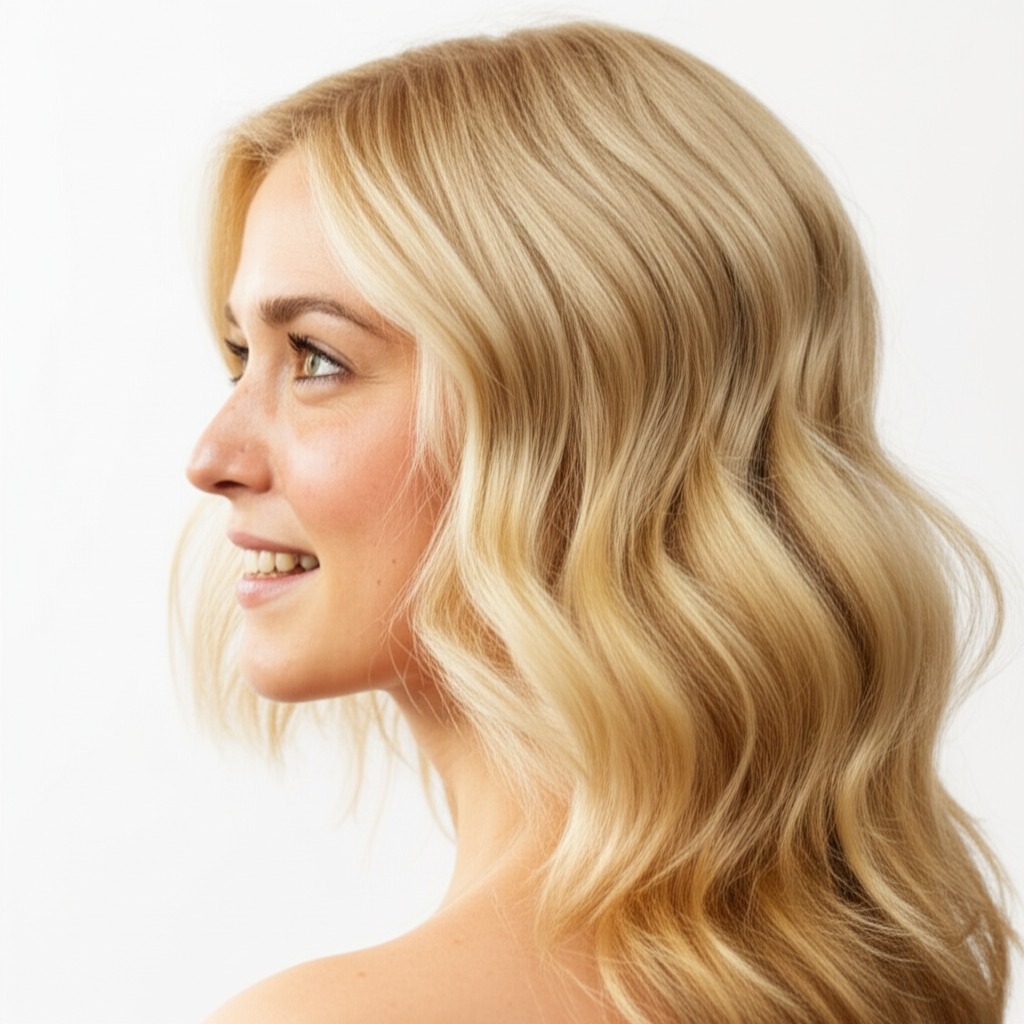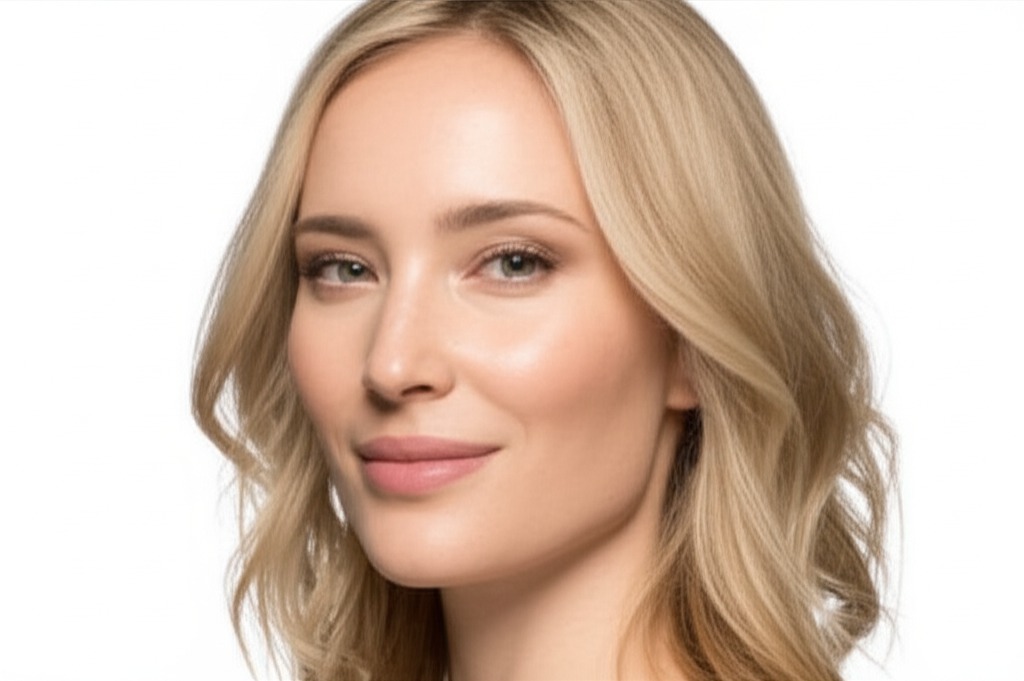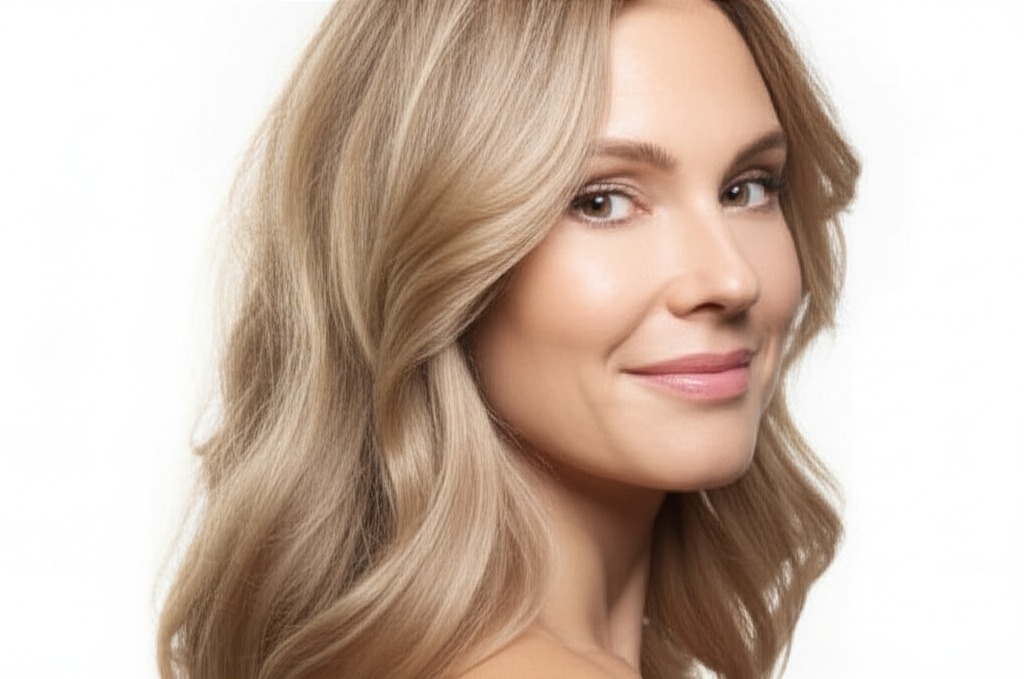#Going Platinum Blonde: A Complete Guide
Platinum blonde is a statement – bright, bold, and undeniably eye-catching! But achieving (and maintaining) that icy perfection takes more than just a quick trip to the salon. This guide breaks down everything you need to know about platinum blonde hair color, from understanding its nuances to keeping it looking fabulous for longer.
#1. Understanding Platinum Blonde: Shade & Depth
Platinum blonde isn’t simply “blonde.” It's a spectrum with subtle differences that impact how it looks on you. Let’s break down the key elements:
- Undertone: This is crucial.
- Cool-toned platinum: Think silvery, icy white – often has blue or violet undertones. This creates a crisp, modern look.
- Neutral-toned platinum: A more balanced blonde with less obvious cool or warm tones. It’s versatile and can work well on many skin tones.
- Warm-toned platinum: (Less common & trickier to achieve) Has hints of yellow or gold. Can be beautiful, but requires careful consideration to avoid looking brassy.
- Depth/Levels: Hair color is measured in "levels" – 1 being the darkest black and 10 being the lightest blonde. Platinum falls between levels 9-12 (often a mix). The higher the level, the lighter the hair appears. A Level 9 platinum will have more visible root contrast than a Level 11 or 12.
#2. Who Does Platinum Blonde Flatter?
Platinum is striking, but it's not for everyone! Here’s what to consider:
- Skin Tone & Undertone:
- Fair skin with cool undertones (pinkish/blueish): Cool-toned platinum will look stunning and enhance your natural coloring.
- Fair skin with neutral undertones: Neutral or slightly cool-toned platinum can work beautifully, creating a soft, luminous effect.
- Medium to Olive Skin Tone: Cool-toned platinum can work but requires careful placement and potentially a more lived-in approach (balayage) to avoid looking harsh. Warm-toned platinum is generally less flattering on olive skin.
- Darker Skin Tones: Achieving true, all-over platinum can be difficult and risky due to potential damage and contrast issues. Highlights or strategically placed balayage are often better options for a brighter effect.
- Eye Color: Platinum complements almost any eye color! Blue, green, hazel, and brown eyes will all pop against the brightness of platinum.
- Natural Level Starting Point: The lighter your natural hair color (levels 1-4), the easier it is to achieve platinum. Darker starting levels (5+) require more processing time and are significantly more damaging to achieve – a serious commitment!
#3. Technique Options: Finding Your Platinum Approach
There's no one-size-fits-all approach to getting platinum blonde. Here’s how stylists can achieve the look:
- Single Process: Applying color evenly across the entire head. Best for those with lighter starting levels or wanting a more solid, uniform look – but requires significant lightening and is potentially damaging.
- Highlights/Lowlights: Adding strands of lighter (highlights) or darker (lowlights) hair to create dimension. Can soften the overall platinum effect.
- Babylights: Very fine, delicate highlights that mimic natural sun-kissed streaks. Creates a softer, more blended look and is less damaging than traditional highlights.
- Gloss/Toner: A crucial step after lightening! Toners neutralize unwanted brassiness and refine the final shade (cool, neutral, or slightly warm).
- Balayage-Effect vs. Solid: Balayage involves hand-painted highlights for a more natural, lived-in look with softer root transitions. A solid platinum application provides even coverage but can require more frequent touch-ups to maintain the line of demarcation at the roots.
#4. Maintenance & Longevity: The Reality Check
Platinum blonde demands dedication!
- Wash Frequency: Aim for 2-3 washes per week with color-safe shampoo.
- Toner Refresh: Every 4-8 weeks, depending on how quickly your hair develops brassiness and the desired shade intensity.
- Root Growth Pacing: The contrast between platinum hair and darker roots can be striking (and stylish!) but requires regular touch-ups. Discuss a root smudge or shadow root with your stylist if you want to extend time between appointments.
- Budget/Time Planning: Expect significant investment! Initial color: $200-$600+ (depending on length, density & starting level). Maintenance: $150 - $400+ every 4-8 weeks. Time commitment: 3-6 hours for initial application; 1-3 hours for touch-ups.
#5. Seasonality & Pairing with Cuts
Platinum adapts beautifully to different styles and seasons!
- Cuts:
- Bob/Lob: A sharp, blunt bob or lob emphasizes the brightness of platinum – very modern and chic.
- Long Layers: Platinum on long layers creates movement and dimension, softening the overall look.
- Pixie Cut: A bold choice! Platinum pixie cuts are edgy and playful but require confidence.
- Seasonal Tweaks: Add warmer highlights in summer for a sun-kissed effect; deepen the tone slightly with a violet or ash toner in winter for a cooler, more dramatic vibe.
- Occasions: Platinum is perfect for evening events, weddings (consider softening it with babylights), and making a statement at work – just ensure your workplace allows such bold color choices!
#6. At-Home Care: Protecting Your Investment
Platinum hair needs extra TLC!
- Sulfate-Free Shampoo & Conditioner: Essential to prevent color fading and dryness.
- Clarifying Cadence: Use a clarifying shampoo occasionally (every 4-8 weeks) to remove buildup, but don’t overdo it!
- Heat Protection: A non-negotiable! Apply heat protectant spray before using any hot tools (blow dryer, straightener, curling iron).
- Color-Safe Styling Tips: Avoid harsh styling products. Opt for lightweight formulas and use minimal heat.
- Product Checklist: Purple shampoo/conditioner, color-safe deep conditioner, leave-in conditioner, heat protectant spray, bond repair treatment (if needed).
#7. Common Pitfalls & How to Avoid Them
- Brassiness: The biggest enemy! Use purple shampoo/conditioners regularly and consider a violet gloss at the salon.
- Banding: Uneven color application resulting in distinct lines of demarcation. Proper foil placement or balayage technique is key.
- Patchiness: Inconsistent lightening, often due to uneven hair porosity. A skilled stylist will pre-lighten carefully and use a toner to blend any inconsistencies.
#8. Pros & Cons: Weighing the Options
Pros:
- Head-Turning Style: Platinum is undeniably striking and stylish.
- Versatility: Can be adapted with different cuts, tones, and techniques.
- Brightens Features: The lightness can make skin look brighter and eyes pop.
Cons:
- High Maintenance: Requires significant time and financial investment.
- Damage Risk: Lightening hair is inherently damaging; requires extra care to maintain health.
- Fade Risk: Platinum blonde tends to fade faster than other colors, requiring more frequent touch-ups.
#9. Salon Consultation Script: Setting Expectations
Before going platinum, a thorough consultation is vital! Here are some questions your stylist should ask (and you should be prepared to answer):
- What is your current hair color and level?
- Do you have any previous chemical treatments?
- What is your ideal platinum shade – cool, neutral, or warm? (Bring inspiration photos!)
- How much time/budget are you willing to commit to maintenance?
- Are you comfortable with root regrowth?
- What is your hair texture and density? (This impacts processing time.)
- What's the health of your hair like currently – any dryness, breakage or damage?
#10. FAQs About Platinum Blonde
- Can I go platinum blonde from black box dye? It’s possible but extremely damaging and often requires multiple sessions with a professional stylist.
- How long does it take to achieve platinum blonde? Initial process can range from 4-8 hours, potentially spread across two appointments.
- Is platinum blonde damaging to my hair? Yes, lightening is inherently damaging. Proper care and bond-building treatments are crucial.
- Can I do this at home? While possible for those with lighter starting levels and experience, it’s highly recommended to go to a professional to minimize damage and achieve the desired result.
- How often do I need to get my roots touched up? Every 6-12 weeks is typical, depending on your root growth rate and desired contrast.
- What's the difference between purple shampoo and toner? Purple shampoo helps prevent brassiness; toner actually neutralizes existing warmth in the hair. They work best together!
- Will platinum blonde make my hair look dull? Not if you take proper care of it! Regularly use hydrating masks, glosses, and avoid excessive heat styling.
- Can I go back to a darker color after being platinum? Yes, but be prepared for potential banding or unevenness, especially if your hair was previously dyed dark. A professional stylist can help with the transition.
